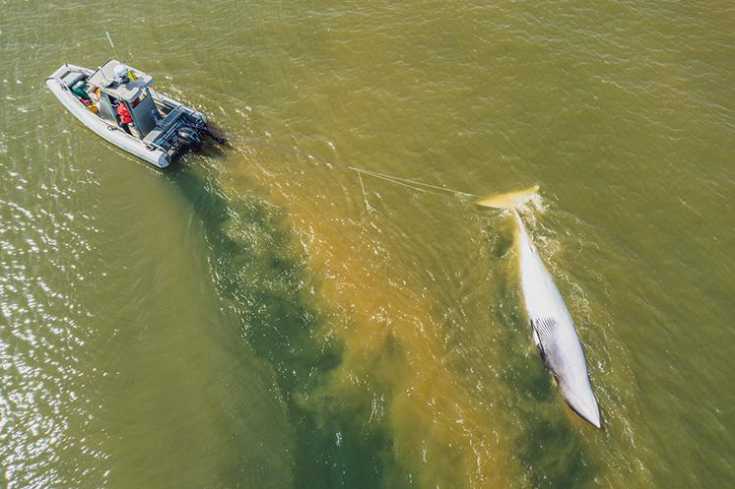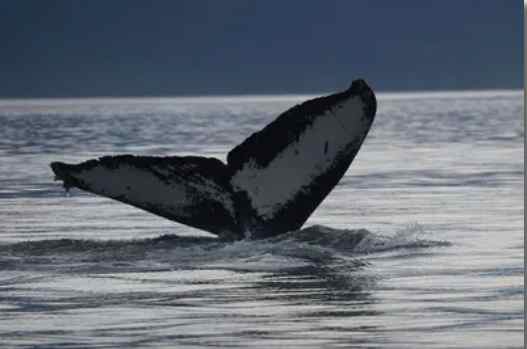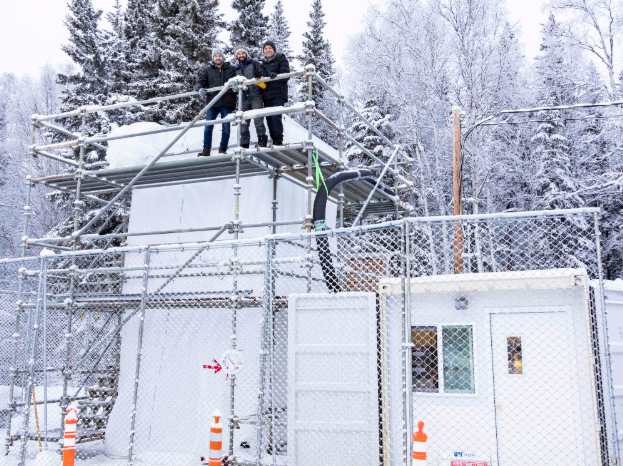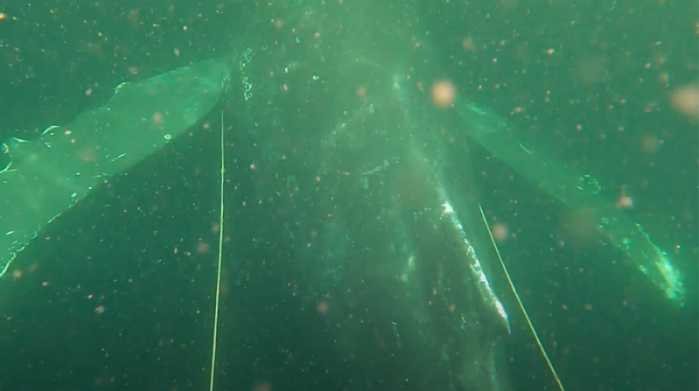 Eyal Saiet’s job is looking for the sweet spot—that connection between machine and science that makes sense.
Eyal Saiet’s job is looking for the sweet spot—that connection between machine and science that makes sense.
For instance, Saiet is thinking of flying an unmanned aircraft through the blow of a surfacing bowhead whale to collect mucus samples. The samples will tell biologists the health, sex and fertility of the migrating behemoth returning to Alaska waters.
Obviously, the craft would be launched from a boat, but he ponders how the mucus should be collected. A pop-open vial or somehow scraped off the aircraft, he mulls.
And what responsibilities will the humans involved have? So many pieces to put together with a potentially marvelous payout.
“So you have an aircraft,” said Saiet, a researcher at the Alaska Center for Unmanned Aircraft Integration at the University of Alaska Fairbanks.
“What can you do with it? What story can you tell now that you couldn’t before?”
He and Lara Horstmann-Dehn, a UAF assistant professor of marine biology, have the vision. Now they are waiting for news of funding.
While government entities, such as UAF, have access to flying the unmanned vehicles, there is nothing comprehensive in place for the public use of the aircraft. Aircraft has to be tested for airworthiness under many conditions just as helicopters and airplanes. Pilots or operators must have training and certification.
But ideas for their commercial use are endless. Some companies, such as Amazon, Google and Facebook, have announced their interest in the vehicles.
A Minnesota company, called Lakemaid, was testing one for beer delivery. However, the Federal Aviation Administration shut them down early this year, as commercial use for unmanned aircraft is not yet legal.
The FAA is making steps in that direction. In 2012, the U.S. Congress passed the Federal Aviation Modernization
and Reform Act directing FAA to begin finding ways to integrate unmanned aircraft into modern life.
ACUASI will be part of the integration process, said Marty Rogers, the center’s director. Late last year, the FAA named UAF as one of six UAS test ranges in the country. The test range is called the Pan-Pacific Test Range Complex and includes partners in Oregon and Hawaii. Its purpose is to help develop policy, procedure, regulations and standards for airports, operators training, and unmanned aircraft systems.
ACUASI has been in operation since 2001 and has been testing unmanned aircraft and pilots on such things as sea ice, fish and wildlife observations, fire suppression, environmental cleanup, and climate research. As a result, they’ve developed their own airworthiness process, in line with FAA.
“It includes 30 hours of flight time,” said Rogers. The tests include recovery from lost links, aircraft behavior protocols and pilot control.
For Rogers and Ro Bailey, ACUASI’s deputy director, Alaska is the right place to conduct this type of work. Aviation is a central to commerce and community in the state and has six times more pilots per capita than the rest of the nation. Unmanned aircraft could find a place in Alaska airspace.
Unmanned aircraft pilot training and certification needs the same type of oversight as manned aircraft pilots. Currently, FAA says unmanned aircraft operators should either have a pilot’s license or have been trained in the military.
“It’s a real revolution,” Bailey said. “It’s the biggest thing in aviation since the Wright brothers. We are trying to figure out what the real requirements will be.”
Since the formation of the Pan-Pacific Test Range Complex, more and more unmanned aircraft companies have signed up to begin the process of gaining FAA approval to fly aircraft. The first work should begin this summer at the GI’s Poker Flat Research Range, 30 miles north of town and will test payload sensors, data processing and pilot control
By then Saiat and Horstmann-Dehn should know if their whale research project is funded. For Saiat, unmanned aircraft has a significant place in science research.
“UAF research should have a plan for unmanned aircraft,” he said. “It’s the next big thing.”
Diana Campbell is the Geophysical Institute public relations coordinator and can be reached at 907-474-5229 or dlcampbell@alaska.edu.
For more information: https://www.gi.alaska.edu or https://acuasi.alaska.edu.








